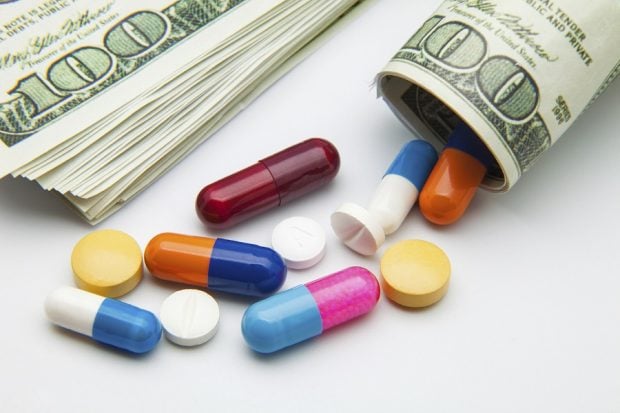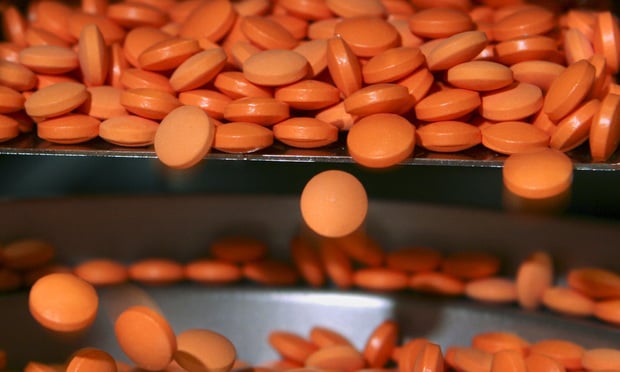 Because rebate contracts are secret, nobody knows the full extent of the practice nor how much it costs the health system in unrealized savings. (Photo: Shutterstock)
Because rebate contracts are secret, nobody knows the full extent of the practice nor how much it costs the health system in unrealized savings. (Photo: Shutterstock)
Lisa Crook was lucky. She saved $800 last year after her insurance company started covering a new, less expensive insulin called Basaglar that was virtually identical to the brand she had used for years.
The list price for Lantus, a long-acting insulin made by Sanofi that she injected once a day, had nearly quadrupled over a decade.
With Basaglar, “I've never had my insulin cost drop so significantly,” said Crook, a legal assistant in Dallas who has Type 1 diabetes.
But many people with diabetes can't get the deal Crook got. In a practice that policy experts say smothers competition and keeps prices high, drug companies routinely make hidden pacts with middlemen that effectively block patients from getting cheaper generic medicines.
Related: 'Cartel' of 16 companies and 300 generic drugs accused of price fixing
Such agreements “make it difficult for generics to compete or know what they're competing against,” said Stacie Dusetzina, an associate professor of health policy at Vanderbilt University School of Medicine.
Here's how it works: Makers of established brands give volume-based rebates to insurers or intermediaries called pharmacy benefit managers. In return, those middlemen often leave competing generics off the menu of drugs they cover, called a formulary, or they jack up the price for patients. The result is that many can't get the cheaper drugs unless they shoulder a bigger copay or buy them with no help from insurance.
Brand-drug sellers “pay for position” on the formulary, said Michael Rea, CEO of Rx Savings Solutions, which helps health plans and employers manage pharma costs. “In this country, the most cost-effective drugs don't necessarily mean anyone will have access to them … [Companies with] the deepest pockets win.”
This so-called rebate trap joins a long history of efforts by makers of brand-name drugs to stifle generics, including protecting drugs with multiple layers of dubious patents, “pay for delay” deals to keep generics off the market and withholding key ingredients needed for generic production, critics say.
Because rebate contracts are secret, nobody knows the full extent of the practice nor how much it costs the health system in unrealized savings.
“The deals between the drug companies and the PBM middle players are guarded as fiercely as Fort Knox,” said Robin Feldman, a law professor at the University of California, Hastings College of the Law, who studies pharma policy. “No one gets to see them.”
But new research is turning up plenty of evidence of rebates distorting the market, such as numerous instances of effective, less expensive generics missing from formularies or patients burdened with higher out-of-pocket costs for generic drugs.
In unpublished research, Dusetzina found that only 17 percent of Medicare plans for seniors covered Basaglar, the biosimilar launched by Eli Lilly two years ago. Nearly all of them covered brand-name Lantus, sold by Sanofi, as of early last year.
Her research suggests rebates from Sanofi might have induced insurers to leave lower-priced Basaglar off their formularies, Dusetzina said.
Sanofi works with insurers and pharmacy benefit managers “to negotiate access for patients to our portfolio of products including Lantus,” said company spokesman Jon Florio, declining to disclose specifics.
Medicare plans covering Lantus but not Basaglar include numerous offerings from Anthem, the biggest for-profit, Blue Cross and Blue Shield insurer.
“After evaluating the total cost impact on consumers, taxpayers and the government, we chose to cover the brand drug, Lantus, over the biosimilar, Basaglar,” said Anthem spokeswoman Lori McLaughlin.
Replacement versions of complex drugs often made from living cells are called biosimilars, not generics. Basaglar is considered clinically equivalent to Lantus but, because of a legal wrinkle, won't technically be considered a biosimilar by regulators until 2020.
Merck scrapped its own biosimilar version of Lantus last fall, despite receiving tentative approval by the Food and Drug Administration, after “assessing … the market environment,” the company said.
Coverage of Lilly's Basaglar has grown, and the drug is now included in formularies used by slightly more than half the patients who have health insurance, said Eli Lilly spokesman Greg Kueterman.
In another forthcoming study, this one examining 2018 Medicare coverage, researchers at Johns Hopkins Bloomberg School of Public Health found that “almost every plan has at least one branded drug on the formulary that's in a better place than the generic,” said Gerard Anderson, the professor leading the research.
(A grant from the Laura and John Arnold Foundation, which helps support Kaiser Health News, financed the Hopkins research.)
In 2015, only 19 percent of generic drugs covered by Medicare were in the preferred formulary tiers with the lowest out-of-pocket costs, found a study last year by consultants Avalere. In 2011, on the other hand, 71 percent of generics had been in the best tier, which helps determine what patients are prescribed.
The Association for Accessible Medicines, the generic drug lobby, paid for that study. Rebate-influenced barriers to generics are “increasingly problematic,” said AAM CEO Chip Davis.
Disputes over formulary choices have hit the courts. Pfizer sued Johnson & Johnson in 2017, alleging that rebates induced insurers to prefer Remicade, an anti-inflammatory biologic, at the expense of Pfizer's lower-priced product.
Critics of rebate traps include top Trump administration officials, under pressure from a president who has promised to lower drug prices.
Because quick rebates from brands are often more attractive to PBMs and insurers than long-term savings from generics, “this is a real challenge in terms of biosimilars coming to market and gaining market share” Scott Gottlieb, head of the FDA, said in an interview.
Such objections add to a crescendo of grievances against hidden rebates. Consumers and advocates have complained for years that rebates cut costs for PBMs and insurers but do little for patients, who are often left paying their out-of-pocket share based on soaring list prices.
Crook's out-of-pocket costs for Lantus rose steadily over the years to about $900 annually, she said. After switching to Basaglar last year, her cost was less than $100.
Mark Gooley, who has Type 1 diabetes and lives in Florida, said he started ordering Lantus by mail from Canada after the U.S. list price rose fourfold in a little more than a decade.
“I have a very low opinion of companies like Sanofi,” he said. “They could afford to sell it to me when it came out” at a much lower price, he said. “Inflation has not been 400 percent.”
Because of rebates paid to PBMs, Sanofi's net price for Lantus has actually decreased over the past five years despite the list-price increases, said company spokesman Florio. “Unfortunately, these savings are not consistently passed through to patients,” he said.
PBMs say they respond to the terms drug companies offer and negotiate to save billions for government, insurers and employers. “Simply put, the easiest way to lower costs would be for drug companies to lower their prices,” the Pharmaceutical Care Management Association, the PBM lobby, said in an emailed statement.
For its part, PhRMA, the branded-drug association, has said it wants to scrap the rebate system and have PBMs paid for services provided.
Congress has done little to fix the rebate problem despite widespread criticism, but senior legislators in both chambers have pledged to address high drug prices this year.
Last summer, the Department of Health and Human Services proposed changing “safe harbor” protections that shield pharma rebates from being viewed as illegal kickbacks. But the proposal, under review at the Office of Management and Budget since July, has never been publicly aired, leaving the industry to wonder how substantial it is and if it will ever take effect.
KHN's coverage of prescription drug development, costs and pricing is supported in part by the Laura and John Arnold Foundation.
Kaiser Health News (KHN) is a national health policy news service. It is an editorially independent program of the Henry J. Kaiser Family Foundation which is not affiliated with Kaiser Permanente.
Read more:
© Touchpoint Markets, All Rights Reserved. Request academic re-use from www.copyright.com. All other uses, submit a request to [email protected]. For more inforrmation visit Asset & Logo Licensing.






